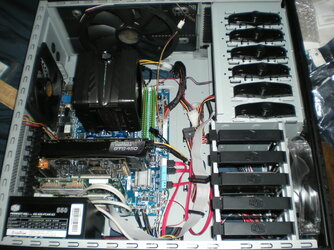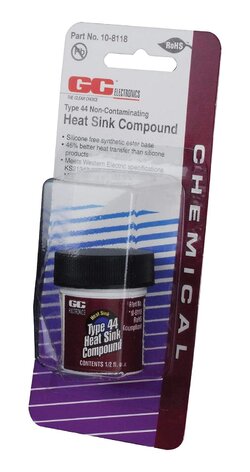Update: After having gone full water on both the CPU and GPU with NT-H2 being used on both, I've had to repaste again the other day, mainly because of the GPU. I was gaming the other day and noticed that my GPU temps were suddenly hitting and staying around 100C, with even 110C cropping up. Having already experienced NT-H2 drying out on the CPU previously where idle temps were in the 70's, I figured it was time to repaste the GPU, though it had only been a few months since initially setting up the loop (not too long before my initial post in this thread).
CPU paste was ok, though it was obvious I used too much. It was pretty thick and I even managed to pull the CPU out of the socket when I tried to remove the waterblock from it (pucker moment if anyone knows of how tiny those Zen2 pins are). The GPU was another story entirely...
When I went to pull the block off the GPU side of the card, it surprisingly came apart very easily. I had the block on the table (backside of the GPU card facing up to me), so I didn't see the GPU itself first, but the surface of the water block that would make contact with the GPU die, was strangely devoid of TIM. When I flipped the card over to take a look at the GPU die itself, it too was devoid of paste, and instead covered in what I assume it the suspension liquid used in NT-H2. It looked like a clear, thin oil was on the GPU die, and all the TIM particles was completely pushed out around the sides/edges of the GPU die. In just a couple of months, the NT-H2 mix had completely seperated itself, and nothing but the suspension liquid was left between the GPU and water block contact surface.

In all the years I have been building PCs, overclocking, and watercooling, I have never experienced the TIM seperating while in use in a system. Dry out? Yes. Seperate the particles from the suspension fluid? Only on really old, cheap TIM while it was still in the syringe sitting forgotten in a box, definetely not while in use! I don't know if it's because of the age of the NT-H2 I have (its definetely over 3 years since I purchased it), though it does appear to still look fine, or if the conditions it was under (high temperture fluctuations from the GPU and high pressure betwen the GPU & block), but I'll be looking for a new TIM as having to repaste every few months on a complete loop is not fun.
For now, I've repasted with the the NT-H2 untill I find something better. I'm even considering those carbon nano pads or whatever they're made of, as the difference of a few C between the top/best performers isn't critical in my setup. I'd rather get something I can set and forget, even if it means the components will run 3-5C hotter. I'll still be well below max T with my setup.



